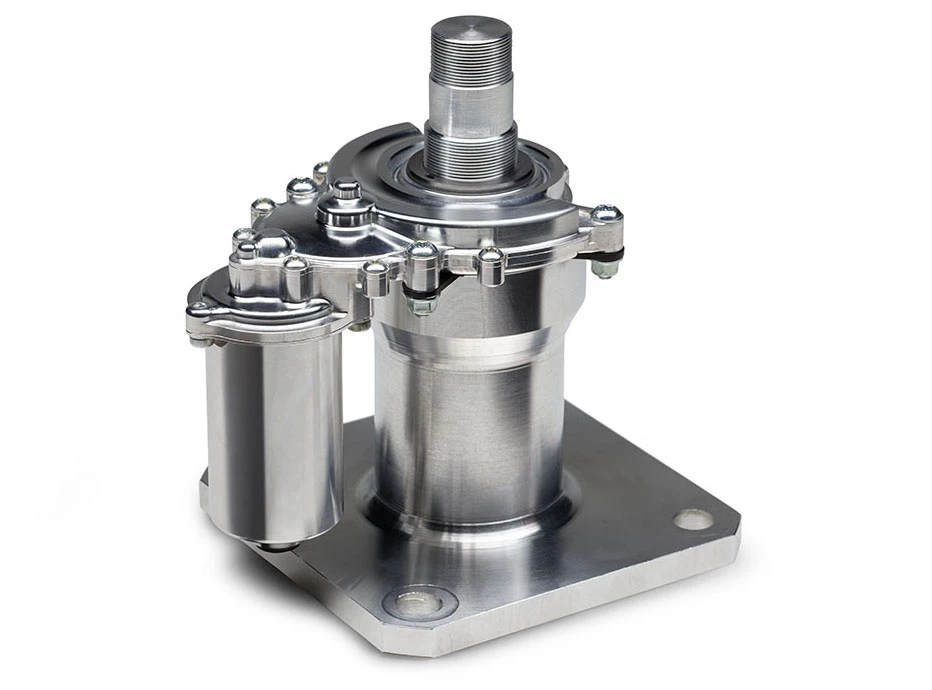Yamaha is sending a motocross racing team into battle this year equipped with prototype power steering systems that also act as steering dampers. It might look crazy at first glance, but there's fascinating implications for future motorcycle design.
The EPS system is a relatively compact unit that mounts to the top triple clamp. It uses a magnetorestrictive torque sensor, similar to what's used to detect pedal inputs on an ebike, to sense the rotation of the steering head as the handlebars turn, then uses it own ECU to decide how much torque to put in of its own accord, and in which direction.
At low speeds, it'll act like a car's power steering unit and assist the rider's steering inputs. At high speeds, it'll transition into an electronically tuneable steering damper that restricts the bars from turning too quickly, in order to eliminate head-shake and tankslapper-style oscillations in the name of safety and stability.
Obviously, adjustable and even electronically controlled magneto-rheological steering dampers have been out there in the motorcycle world for decades now – the key differential with EPS is in its ability to actively assist steering at slow speeds. Yamaha says it'll "improve agility, reduce rider fatigue and more." At first glance, this is a real head-scratcher; how many bikers are finding their front wheels too hard to turn? Who's asking for this?
But maybe there's method in the madness here. Dirt bikes, and even some big naked streetbikes, run wide handlebars in the name of better control authority as riders push them into turns. The wide bars are part of the look, and the stance of riding these machines, and it certainly does feel good having a little extra leverage as you steer or counter-steer.
But wide bars also come with penalties. On a streetbike, they restrict you from getting through certain gaps in traffic, and graze pedestrian-sized gates as you pass through. On a dirtbike, they snag on vines, branches, and – in close racing conditions – on opponents during passing moves.

A simple system like this might end up replacing traditional fluid-based steering dampers without adding much cost, while giving Yamaha the ability to run whatever handlebar width is most advantageous, without sacrificing any turning authority.
Sending our imaginations far into the future, the ability to self-steer is also a pre-requisite for autonomous and self-balancing motorcycles, as Honda demonstrated at CES 2017 with its self-balancing NC750S. In an electric future, it's not hard to imagine motorcycles that can go off and park themselves, or arrive at your summon, or that can run some kind of lane-keeping adaptive cruise system to add some serious hands-free comfort to long journeys.
Or indeed, perhaps at some stage there will be self-driving scooter taxis. That's certainly a terrifying thought – but on the other hand, millions of people take motorcycle taxis in cities like Saigon and Bangkok every day of the week, and as a survivor of a couple of dozen rides on those, I defy any autonomous scooter to be half as terrifying as the current system.
Returning from our future-fantasy daydream to the real world of 2022, the fact that Yamaha's choosing to take the EPS system racing, fitted to two YZF450FMs and one YZ250F, is a real vote of confidence in its capabilities, as well as an opportunity to gather lots of data under extreme conditions. We're fascinated to see where it goes from here.
Source: Yamaha





